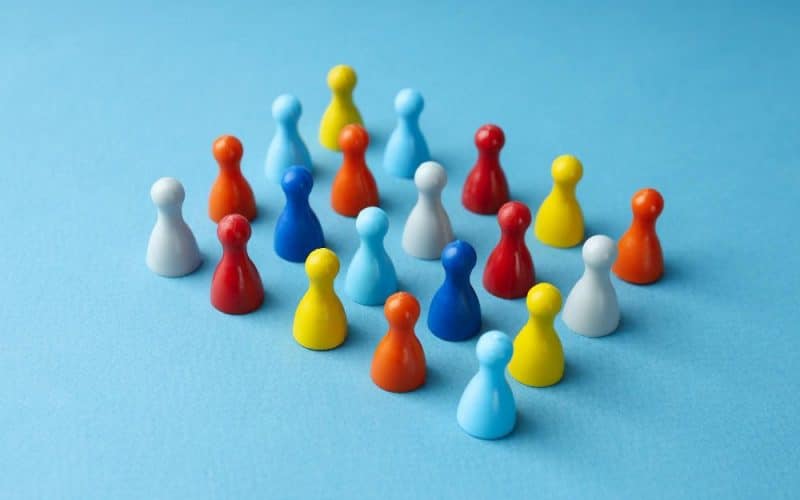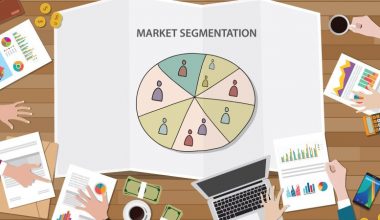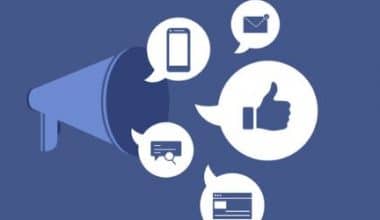Marketing segmentation has always been a key component of the most effective marketing strategies. By dividing customers into smaller groups based on their needs and actions, you ensure that you are best placed to efficiently solve their problems and in turn, sell more of your products. However, behavioral segmentation takes it a step further.
By dividing your customers according to behavior, you can leverage other useful customer metrics like behavioral data to help you identify how your customers interact with your business.
It can answer questions like How many times they visit your online store before purchasing? Or Which promotional message – a discount code or a free shipping guarantee – is more likely to nudge them towards a higher-value purchase?
Key takeaways
Behavioral segmentation divides customers into segments depending on their behavior patterns when interacting with a particular business or website.
It separates people based on common factors, such as purchasing similar products, sharing the same hobbies or having similar beliefs.
The goal of behavioral segmentation is to learn a customer’s knowledge of, attitude towards, likes or dislikes or reaction to a product, service, brand or promotion.
Depending on the company or business, you can select or combine certain segmentation strategies when promoting products or services.
Behavioral segmentation is best used to understand the areas of strength and friction across all touchpoints throughout the customer journey.
What is behavioral segmentation?
Behavioral segmentation refers to a process in marketing which divides customers into segments depending on their behavior patterns when interacting with a particular business or website. It separates people based on common factors, such as purchasing similar products, sharing the same hobbies or having similar beliefs.
These factors could include grouping customers by:
- Their attitude toward your product, brand or service;
- Their use of your product or service,
- Their overall knowledge of your brand and your brand’s products,
- Their purchasing tendencies, such as buying on special occasions like birthdays or holidays only, etc.
This marketing strategy reaches beyond the basic demographics of location, age, gender, occupation or income level. Most segmentation in marketing is collaborative and correlated. However, behavioral data and demographics combined can better help you address a customer’s needs and wants.
The goal of behavioral segmentation is to learn a customer’s knowledge of, attitude towards, likes or dislikes or reaction to a product, service, brand or promotion.
Through behavioral segmentation methods, you can gather important data that can help you:
- Learn how to address the needs and wants of a customer or group of customers
- Tailor products, services, offerings or promotions to meet their needs or encourage sales
- Explore ways to optimize the customer’s buying journey
- Evaluate a customer’s long-term value for business
- Plan marketing campaigns to strengthen the customer base
Types of behavioral segmentation
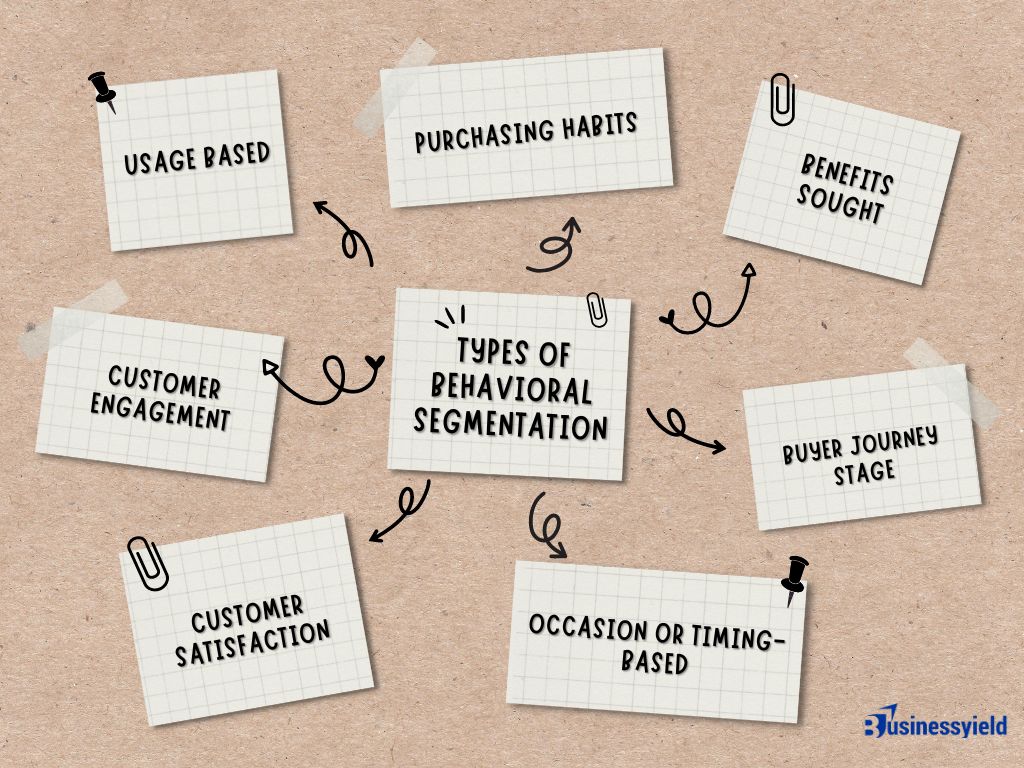
Depending on the company or business, you can select or combine certain segmentation strategies when promoting products or services. Here are the types of behavioral segmentation:
Purchasing habits
You can engage with a customer based on their purchase or browsing history. For example, if a customer shops for a coat through an online retail website, but doesn’t make the purchase, you can send a follow-up email letting them know it’s still available to encourage the sale.Other types of purchase behavior can include:
- Waiting for the best price: If price influences a customer’s purchase, you can target sales, promotions or holiday deals when prices are lower and there is a stronger likelihood of a purchase.
- Not rushing to buy: If a customer does not have an immediate need for the purchase, consider adding a time-sensitive element in an email, like a countdown clock for a sale or a limited-time offer to create more urgency, like free shipping, for example.
- Wanting reassurance: If a customer is interested but curious if the product is good, fashionable or durable, consider adding customer reviews and ratings on the website or in a marketing email to offer consumer backing.
Below is an example of an automated email triggered when a customer abandons their shopping cart. It is designed to drive people back to the shop to finish their purchase.
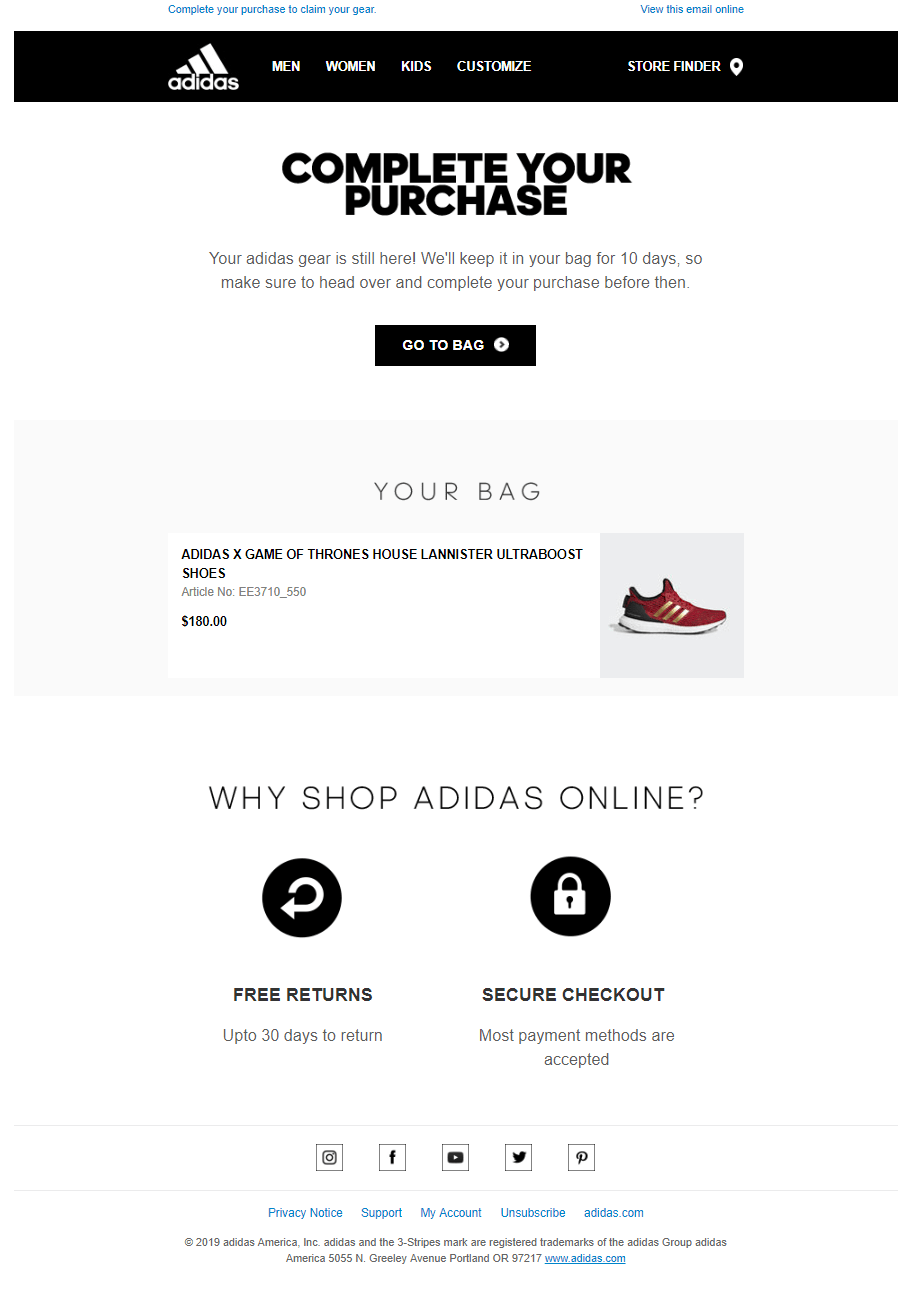
Benefits sought
Identify what your customers are looking to get out of your product or service — of all of your features, which do they need most to resolve the challenge(s) that they’re experiencing? What specific benefits do they get out of your product and which of those benefits are most important to them?
Grouping your data by benefits sought helps you narrow down the specifics of what drives customer purchases, revealing which product feature or service aspect they feel most attuned to. Divide data by these benefit categories when using this form of behavioral segmentation:
- Quality: What makes your product better than your competitors?
- Usage: How will it benefit your customer when they use it?
- Customer Feedback: Are your customers happy with the product or service, or are there areas for improvement?
- USPs: What makes your product unique from other already existing products?
- Additional Benefits: Are there other advantages a customer could receive from purchasing your products or services?
You can determine which of those benefits are influencing their decision to use your product/service most.
Here’s an attempt to identify what stops a subscriber from using a service — technical issues, lack of features, or not enough motivation.
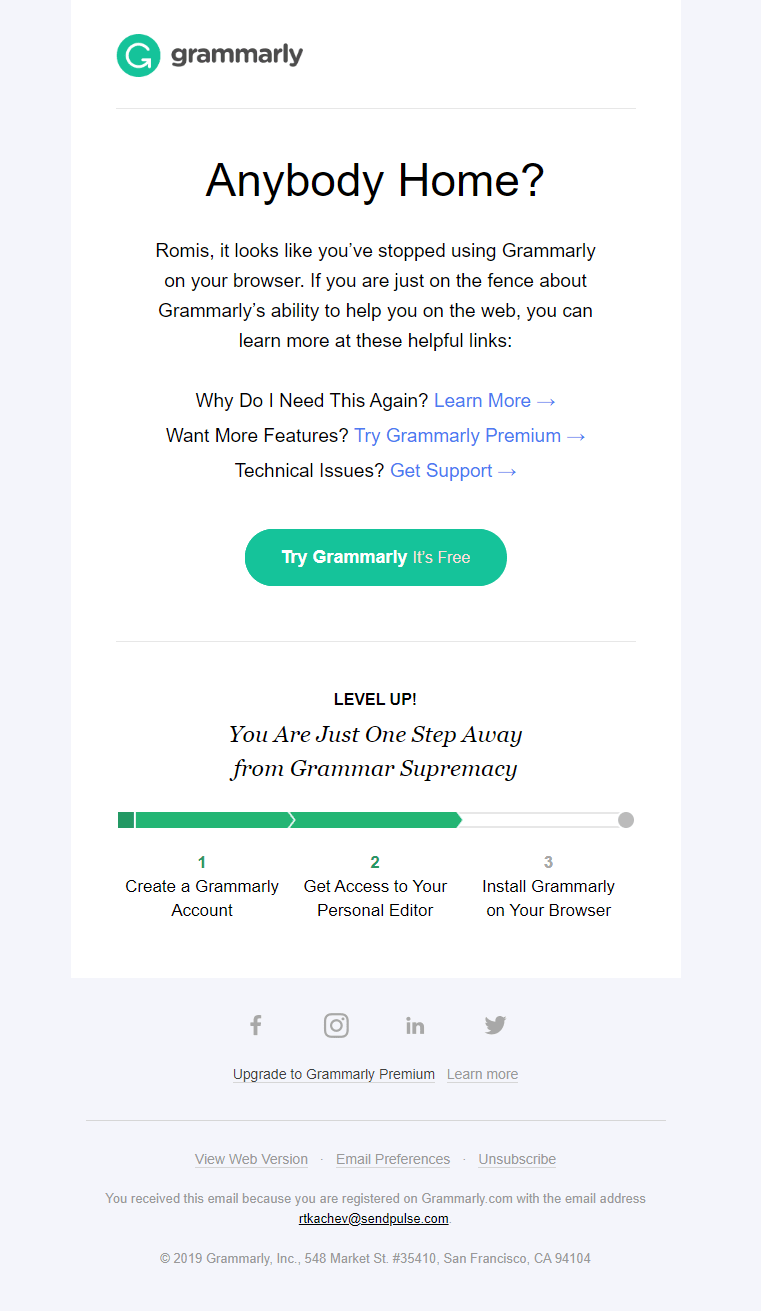
Occasion or timing-based
Occasion-based segmentation categorizes customers who are most likely to interact with your brand or purchase from your website on either specific occasions or set times. Such occasions could include national holidays like Labor Day, a holiday season like Thanksgiving or Christmas, or life occasions, such as a wedding, new house, or vacation.
Occasion-based purchasing can also occur in a customer’s daily routine. Purchases like a happy hour round of drinks after work and a caffeinated morning drink are all types of occasion-based purchases as they are only bought at precise times.
Grouping customers using this form of segmentation involves monitoring a customer’s purchasing behavior to establish a pattern so that you preempt the targeting process.
For example, if your store has customers that participate yearly in your Thanksgiving promotions, but do not buy anything else from you throughout the year, you can use this information to market to the customer in weeks in advance.
The example below is a way to use occasion — the end of the year — to upsell a pricing plan.
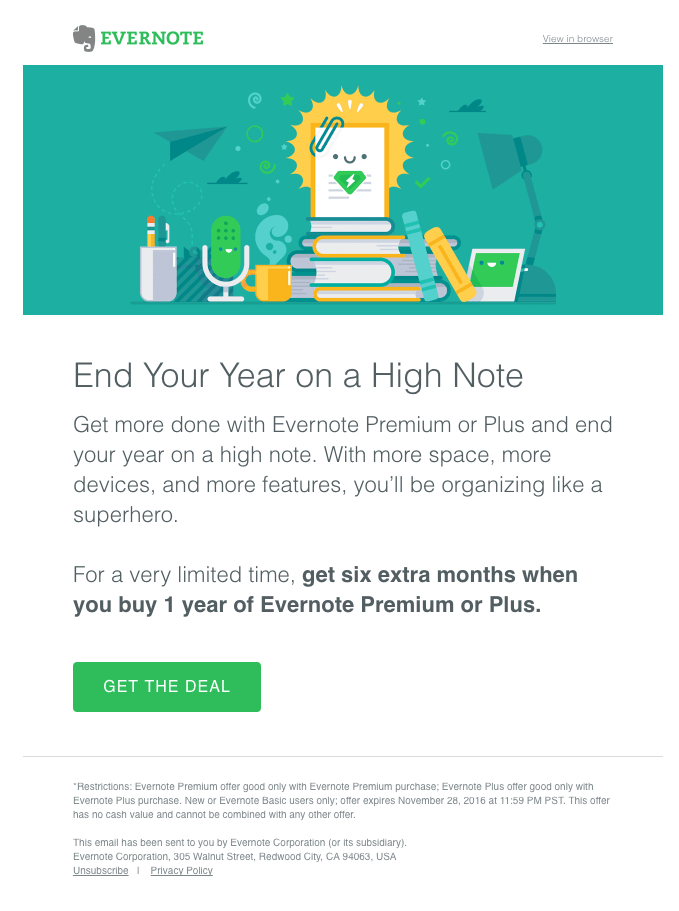
Buyer journey stage
Understanding which stage of the customer journey leads to the most conversions or which stage prospects get hung up on most frequently is beneficial information when predicting behavior and segmenting customers based on those behaviors.
However, it’s important to note that using customer journey stages in behavioral segmentation can be difficult because there are so many stages — and within those stages are multiple touch points that contribute to behavior or decision to remain in a stage or move forward to a new stage, of the buyer’s journey.
That’s why it’s recommended to use a platform like your CRM or an AI/machine learning tool — they record and track all interactions throughout the buyer’s journey to ensure you’re getting a complete view of your customer’s buyer’s journey behavioral data.
SEE: ERP vs CRM: Choosing the Right System for Your Business
Below is an example of lead nurturing — the lifecycle stage where the company provides educational materials, showing how the product deals with the problems.

Customer loyalty
Learning which customers are your most loyal—and keeping them as long-term customers—provides continued revenue and is a more cost-effective approach than recruiting new customers. Consider building loyalty programs for these patrons and leveraging their support to promote the company or product.
You can use their continued support to highlight the value of the goods and services your employer sells and also appeal to new potential clients.
The example below is a way to celebrate cooperation and show a user’s interactions with your brand.
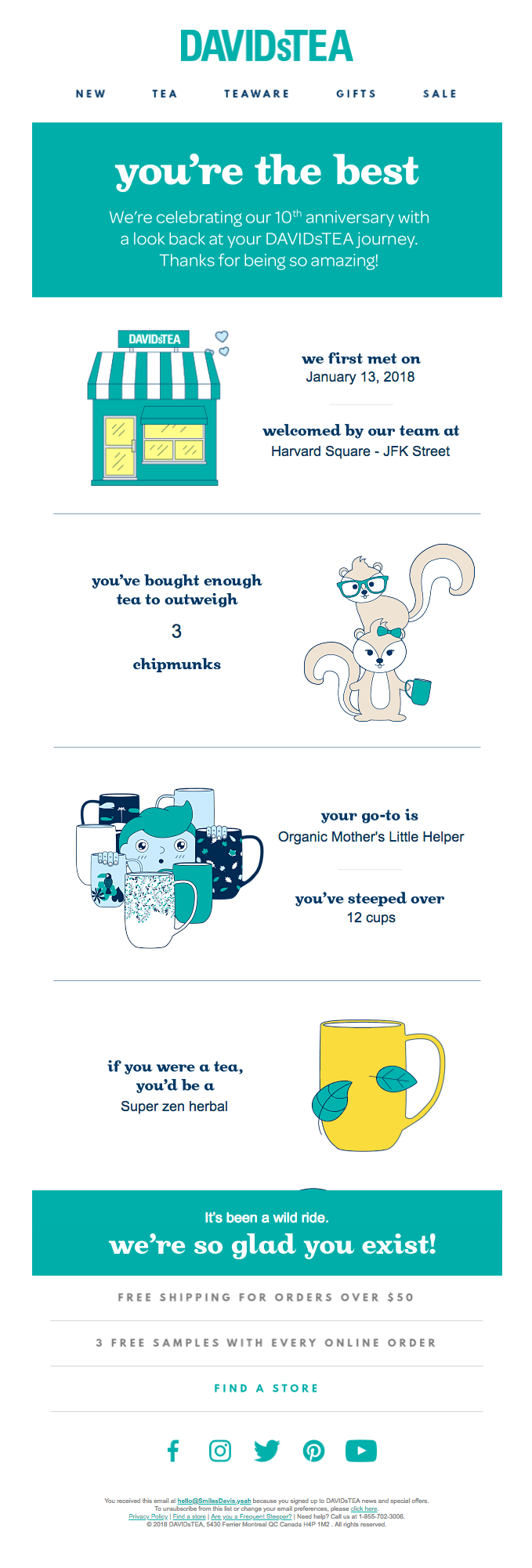
Usage
Usage-based segmentation enables you to segment your customers based on how they actually use the product or service, how frequently they use it, how long they use it in a single session, or which features they use most.
For example, if you sell software, you might choose to segment your customers further into more specific usage categories — for instance, heavy users versus average users versus light users. Then, heavy-user messaging could highlight advanced features and upselling campaigns, while low-usage messaging could encourage more usage by discussing the key program features or how to use them.
Customer engagement
You can adjust the amount of marketing based on how often a customer uses your services or buys your products. Most customers are in these three engagement categories:
- Occasional: These customers know your brand, though infrequently purchase. You can learn why or motivate them for more engagement through surveys or special offers.
- Regular: These customers regularly purchase from you, though there is more product or service they’re missing. You can encourage more support through loyalty programs, how-to videos or highlighting new products or features.
- Intensive: These customers are typically the most loyal. They frequently purchase or share information with family and friends, so you want to treat them well and encourage continued brand loyalty. Consider gestures like birthday well wishes or promotions, invitations to special events or exclusive bonus offerings.
The example below is a reactivation email which aims to keep a user engaged.
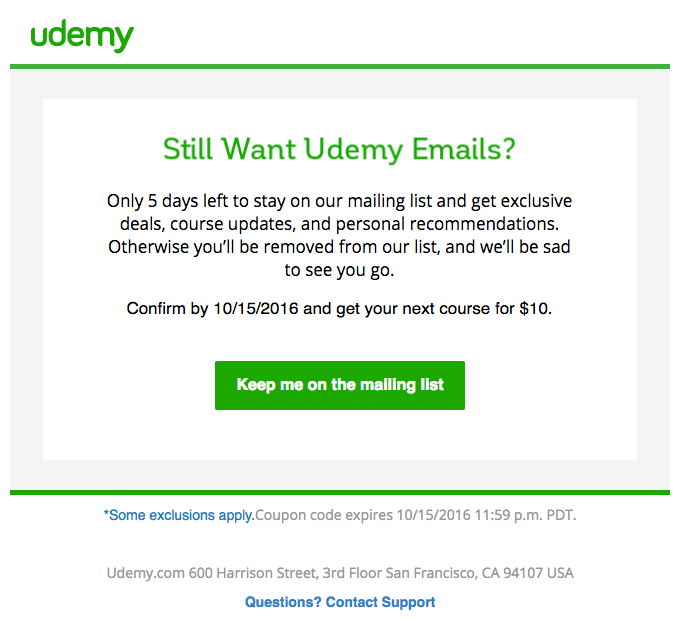
Customer satisfaction
Customer satisfaction (feedback) is another type of behavioral segmentation. It helps build stronger relationships between a customer and company and gives an opportunity to fix or improve an issue before a customer becomes dissatisfied.
You can also use follow-up surveys or text messages to gauge customer satisfaction.
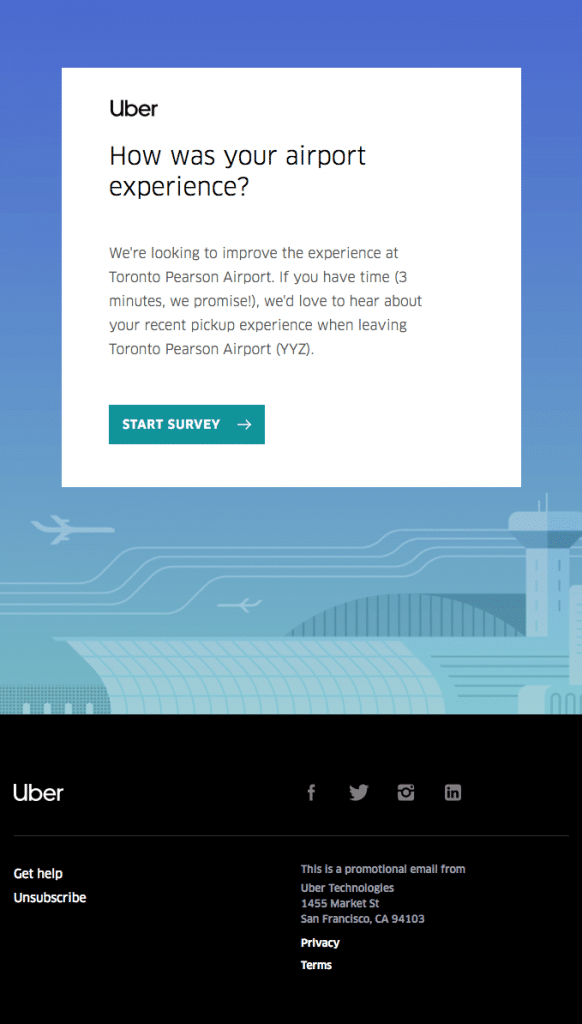
When to utilize behavioral segmentation
Behavioral segmentation is best used to understand the areas of strength and friction across all touchpoints throughout the customer journey. It is a great way to uncover key truths about the way customers engage with a product and answer questions like:
- What behaviors take people from prospective to new customers?
- Which email marketing messages have the highest conversion rates?
- How effective are loyalty programs at converting light users into heavy ones?
- What steps do heavy users take before completing a purchase?
- When do purchases spike and how can identifying those spikes be used to upsell more products?
- Who are the most loyal customers and what would help retain them?
Behavioral segmentation unlocks opportunities at every stage of the customer lifecycle, offering a powerful way to enhance marketing strategies that optimize the user experience and drive engagement.
How to apply behavioral segmentation for increased engagement
Some customer behavior patterns are difficult to uncover, especially in less active segments. This makes applying behavioral segmentation a challenge. To understand a customer, they need to interact with your brand multiple times. You’ll need to note and track their key customer interactions across time to discover patterns and actionable insights.
Each type of customer behavior is complex and often customers don’t progress in a straightforward way. However, looking at a single interaction isn’t enough to understand their needs or habits.
To build a complete understanding of their behavior, you’ll need to leverage behavioral customer data over time and across many touchpoints. Powerful software solutions and automation, such as a capable CRM, are invaluable to this process. They can now quickly segment your customer types in real time.
Below are strategies you can use to apply behavioral segmentation to your business for improved growth:
Behavioral segmentation strategies
Why you should use behavioral segmentation marketing
Using basic segmentation tactics is a powerful way to target key customers. However, behavioral market segmentation can take this to the next level, letting you filter your audience based on their actions. This enables you to hyper-target those customers who are the most engaged and likely to convert.
Here are some of the other benefits of behavioral segmentation:
Increase brand loyalty
Delivering a personalized experience helps customers feel that you’re willing to cater to their interests. Behavioral segmentation can help you increase customer lifetime value (CLTV) and reduce churn, driving revenue in the long term.
Target customers at the right time
Certain customers may only be active at specific times or buy your products on certain sale holidays. With behavioral segmentation, you can target them when they are most likely to engage with your marketing material.
Inform every department with updated key insights
By including behavioral segmentation into your marketing strategy, everyone understands your customers on a deeper level. Learning why your customers use your products and when they are most likely to buy can inform marketing, sales, product development, stocking plans and more.
Optimize your messaging
Personalize your content beyond merge fields (“Hi _insert name_”) and share relevant information with each customer. Returning to the camping store example, you could segment your audience based on interests, such as parents buying camping items or senior customers who are new to fishing. You can then optimize and target their preferences in your messaging.
Allocate budget and resources optimally
Allocate your resources to customers who are almost ready to buy, increasing your return on investment (ROI), such as customers who regularly comment on social media posts. With optimized targeting, you can spend your budget more efficiently.
